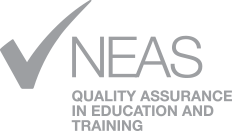Overview
Assessments shouldn’t just measure learning — they should drive it. This practical NEAS PD unit shows you how to design fair, valid, and motivating assessment tasks for English language learners. You’ll connect key theories (cognitive load, language acquisition) to classroom practice, write stronger test items (especially MCQs), and calibrate tasks for different proficiency levels. Zero fluff; maximum classroom impact.
Who it’s for
- ELT teachers, DOS/ADoS, curriculum leads, and QA managers
- ELICOS, EMI, pathway, and higher-ed language programs
- Anyone redesigning tests, rubrics, or placement tools
Time & Format
- Total runtime: ~20 minutes of short videos + activities
- Format: 10 bite-size sections (1–10 mins each) with a pre-course quiz and optional readings
- Mode: Self-paced; downloadable PDF notes provided
Learning Outcomes
By the end, you will be able to:
- Explain how Cognitive Load Theory and language acquisition principles shape assessment design.
- Distinguish diagnostic, formative, summative, performance-based, and self/peer assessment — and know when to use each.
- Apply validity, reliability, authenticity, level-appropriateness, and cognitive load in task design.
- Write high-quality multiple-choice items, including plausible distractors that test real understanding.
- Calibrate tasks for beginner, intermediate, and advanced learners using frameworks like CEFR.
- Use assessment results to give targeted feedback and refine teaching.
Course Structure
- Before you start: Pre Course questions and videos
- Lesson 2: Second Language acquisition and design implications
- Lesson 3: Types of assessment (diagnostic, formative, summative, performance, self/peer)
- Lesson 4: Designing effective tasks & test items (validity, reliability, authenticity); Avoiding negative backwash
- Lesson 5: Crafting multiple-choice distractors
- Lesson 6: Matching tasks to proficiency level
- Conclusion and key takeaways: Quick recap; bibliography; where to find out more

